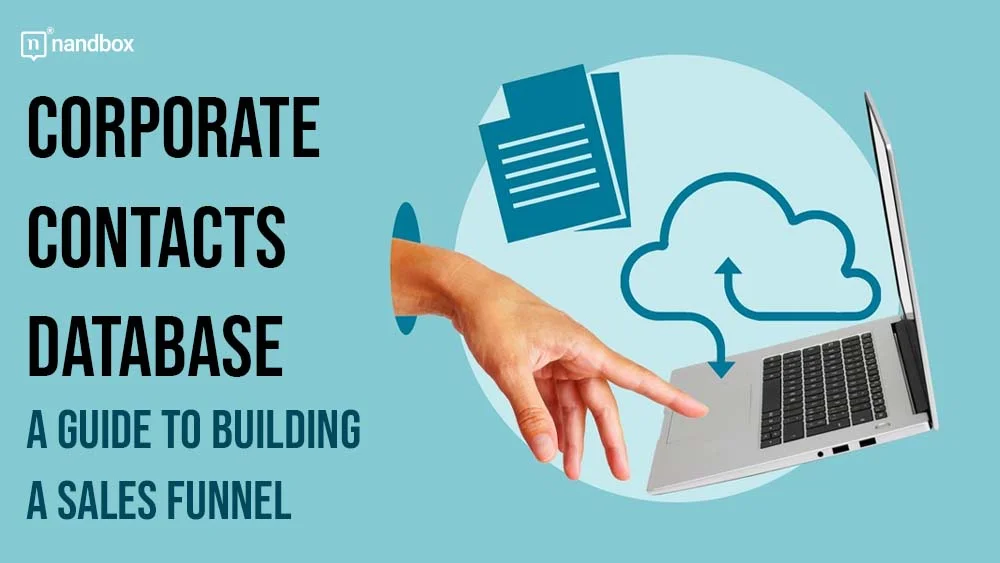In the dynamic landscape of sales and marketing, creating a robust sales funnel is crucial for sustained growth and customer acquisition. A well-structured sales funnel allows businesses to systematically guide prospects through every stage of the buying journey, converting them into loyal customers. One key component of this process is a corporate contacts database, which serves as the backbone of effective sales funnel management.
In this guide, we will explore how to build and optimize a sales funnel using a corporate contacts database. While the discussion will remain informative, we’ll take inspiration from tools like Lusha, which exemplify how data-driven strategies can revolutionize sales pipelines.
What is a Corporate Contacts Database?
A corporate contacts database is a centralized repository of information about prospects, leads, and customers. This database contains critical details such as names, job titles, email addresses, phone numbers, company affiliations, and interaction history. The purpose of such a database is to empower sales and marketing teams with accurate, up-to-date information that can be leveraged for personalized outreach and engagement.
Why a Corporate Contacts Database is Essential for Your Sales Funnel
A corporate contacts database streamlines the process of attracting, nurturing, and converting leads. Here’s how it integrates into each stage of a typical sales funnel:
1. Awareness Stage
At this top-of-the-funnel stage, the focus is on attracting potential customers. A corporate contacts database helps identify key decision-makers and target audiences using filters like industry, company size, and location. Tools like Lusha simplify this by providing enriched contact details that align with your ideal customer profile (ICP).
Example:
Suppose you’re offering a no-code mobile app development platform like nandbox. A corporate contacts database can help you identify businesses struggling with traditional app development, targeting them with ads, email campaigns, or informative webinars about no-code solutions.
2. Interest Stage
Once prospects become aware of your brand, the next step is to spark interest in your product or service. A corporate contacts database enables segmentation of leads based on their preferences, behaviors, and roles within their organizations.
Tactics:
- Personalized Emails: Craft tailored messages that address the pain points of different audience segments. For instance, startups interested in building native mobile apps without coding can receive case studies demonstrating how no-code platforms like nandbox meet their needs.
- Social Selling: Use LinkedIn and other platforms to engage prospects identified in your database.
3. Consideration Stage
At this middle stage, prospects are evaluating their options. A corporate contacts database can guide your strategy by providing insights into prospect behavior, enabling you to deliver targeted content such as product demos, testimonials, or free trials.
Example:
For a company like nandbox, this could mean offering a free trial of its drag-and-drop app builder, targeting decision-makers listed in the database.
4. Decision Stage
In the final stage, your focus shifts to closing the deal. The database can play a pivotal role by tracking key metrics like response rates, call outcomes, and meeting follow-ups.
Tips:
- Automated Follow-Ups: Use CRM integrations with your database to send timely reminders and offers.
-
Clear Proposals: Tailor proposals to address the specific needs identified through the database insights.
Steps to Building a Corporate Contacts Database
1. Define Your Target Audience
Understanding your ideal customer is the first step. Create detailed buyer personas based on industry, job roles, company size, and challenges.
Example:
If your product is a no-code app builder, target segments could include small businesses, tech startups, and freelance app developers.
2. Gather Data Strategically
Data collection should be ethical and compliant with privacy regulations like GDPR and CCPA. Utilize multiple sources such as:
- Professional Networks: Platforms like LinkedIn.
- Third-Party Tools: Tools like Lusha for enriched contact data.
- Website Forms: Encourage visitors to share their details in exchange for valuable resources.
3. Validate and Enrich Your Data
Raw data is rarely perfect. Validate and enrich it to ensure accuracy and relevance. Tools like Lusha offer features to verify contact details and append missing information.
4. Organize Data for Accessibility
Use a CRM (Customer Relationship Management) system to organize and categorize your data. Integration with sales and marketing tools ensures seamless workflows. For teams that rely heavily on professional networking, a LinkedIn CRM can be particularly valuable in consolidating contact information, tracking interactions, and nurturing leads directly from the platform.
Example:
A business like nandbox could integrate its corporate contacts database with its email marketing and webinar platforms to automate outreach campaigns.
5. Keep Data Up-to-Date
An outdated database can lead to wasted effort and missed opportunities. Schedule periodic audits to ensure your data remains current.
How to Leverage a Corporate Contacts Database for Funnel Optimization
1. Lead Scoring
Assign scores to leads based on their likelihood to convert. Use data from your database, such as interaction history and engagement levels, to prioritize efforts.
2. Account-Based Marketing (ABM)
Target high-value accounts with personalized campaigns. A well-maintained database enables Account-Based Marketing by providing deep insights into organizational hierarchies and decision-making processes.
Example:
If a prospect is a tech startup interested in a no-code app builder, tailor your outreach to highlight how your solution, like nandbox, caters to their specific challenges.
3. Real-Time Analytics
Monitor the performance of your campaigns by tracking metrics like open rates, click-through rates, and response times. Your database serves as the foundation for these analytics.
The Role of Tools like Lusha in Corporate Contacts Management
While this article is not promotional, it’s worth noting how tools like Lusha address many challenges associated with corporate contact databases:
- Accuracy: Lusha provides verified, up-to-date contact details.
- Efficiency: The tool integrates seamlessly with CRMs, reducing manual data entry.
- Scalability: Whether you’re a startup or an enterprise, Lusha’s solutions can scale with your needs.
Real-World Application: nandbox
For a no-code mobile app development platform like nandbox, leveraging a corporate contacts database can unlock significant growth opportunities:
- Target Audience Identification: Use the database to find businesses and individuals needing no-code solutions.
- Personalized Outreach: Send targeted campaigns highlighting nandbox’s drag-and-drop app builder and its ability to create native mobile apps effortlessly.
- Continuous Engagement: Keep prospects engaged with newsletters, case studies, and feature updates.
Conclusion
A corporate contacts database is more than just a collection of names and numbers; it’s the foundation of an effective sales funnel. By defining your target audience, gathering and organizing data, and leveraging tools for enrichment and validation, you can create a sales process that is both efficient and impactful.
Whether you’re a small business using a no-code platform like nandbox or a large enterprise with a complex sales funnel, the principles outlined in this guide will help you drive meaningful results. Tools like Lusha further enhance these efforts by providing the data accuracy and scalability needed to succeed in today’s competitive market.





